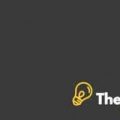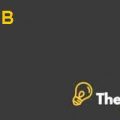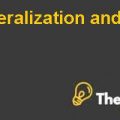
a. Competitor Analysis:
1.1 Four Seasons
Strengths
Strong and well reputed brand equity. Focused and determined management team. Holds a good market share and is innovative in its ways of serving customers (World Travel and Tourism Council, 2012).
Weaknesses
Unable to achieve economies of scale. Unable to communicate the brand extensively is another weakness.
1.2Shangri-La Asia Ltd
Strengths
Leading luxury hotel brand in Asia and wide spread hotels in China. Have won numerous awards for outstanding hospitality by the management and owners alike. Proactive in crisis management.
Weaknesses
The brand is renown in Asia and not everywhere lagging awareness amongst tourists around the globe. The focus is narrowed to only corporate tourists.
b. Industry Analysis: KEY SUCCESS FACTORS
1.1Well Established Brand
- Description
- This helped in generating credibility and customer loyalty
- Success Factors
- Best resorts and Spas in Asia
- Achieved more than 300 awards
- Comes in top fifty luxury resort brands when searched
1.2Corporate Social Responsibility
- Description
- Expose a sustainable image of the business (Banyan Tree, 2013)
- Success Factors
- Efforts to conserve energy
- The Green Imperative Fund to support Corporate Social Responsibility.
1.3USP (Exclusive Service)
- Description
- Exclusive intimate, romantic services are given to customers to enrich their experience
- These services are inimitable
- Success Factors
- Designed especially to embrace customer privacy (Banyan Tree, 2013).
- The infrastructure, the ambience, the service and the landscape, all are a sanctuary in its own.
- Customer due diligence is conducted and customized services are provided per customer request. E.g. romantic getaways, relaxing trip or a wedding proposal.
1.4Autonomous and Well Trained Staff
- Description
- Staff is trained according to the training given in a five star service establishment
- Staff stays at the resort to enjoy the sanctuary experience and then make it an extraordinary sanctuary for the customers
- Success Factors
- The team feels ownership in the company and is well trained
- Offers staff generous policies to ensure efficiency and high quality service.
BANYAN TREE BRAND ANALYSIS
Internal Analysis: SWOT Analysis
1.1Strengths
- It is one of the leading brands in resorts and luxury spa in Asia Pacific region (Banyan Tree Holdings Limited 2013).
- It has trained staff, which helps in maintaining quality of service.
- Until now, it has won more than 400 tourism awards for its premium quality.
- The theme of local culture and crafts in the resorts attract most of peace loving customers (Banyan Tree Holdings Limited 2013).
- It has its own research department in Maldives, which researches about generating coal, save marine life, and future tourism.
- Banyan Tree won over 300 tourism awards for its creativity and being responsible socially and environmentally (Hooi, 2011).
1.2 Weaknesses
- Aggressive strategy can lead to stressful management.
- Communication barrier between the employees of Asian countries is one weakness (Hall, Michael & Stephen 2000).
- Stressful management would decrease the efficiency (Hall, Michael & Stephen 2000).
1.3 Opportunities
- The company can internationalize its business in the western countries as well, which would increase the sophistication of its customers (Atwal & Williams 2009).
- The concept of Eco friendly would help in targeting more customers.
- The quality service would attract more peace lovers to the resorts.
1.4Threats
- The increasing trend of resorts and luxurious places with the tag of Eco friendly is making the competition intense.
- The rates of Banyan Tree are higher as compared to its competitors in some countries (Banyan Tree Holdings Limited 2013).
INTERGRATED MARKETING COMMUNICATIONS PLAN
a. Target Audience
Target audience of Banyan Tree advertising is upper middle and upper class given the Chinese billionaires who fall into this segment. Because Banyan Tree is one of the classic place for tourists, the charges for tourism is in the range of upper middle and upper class, therefore communication plan is designed to attract this segment in particular.
b. Communication Objectives
- Increase awareness in people about Banyan Tree’s romantic and intimate resort services
- Positioning of the service needs to be made in the high profile elite cities, e.g. Qingdao, one of the most visited tourist places and Chengdu, which is a true reflection of nature, with West surrounded by Tibetan mountains and bamboo forests and pandas in the East.
- Increase number of high profile customers from Qingdao, Chengdu, Hangzhou (River ferrying prefecture) and Sanya which is the most popular tropical tourist destinations.
- To overcome the uncertainty by communicating unique selling points, e.g. the exclusive and romantic ambience the resort offers and the unforgettable intimate moments it helps to accumulate.
- Decrease the communication gap between consumer and service providers.
Manage demand in low demand period...............................
This is just a sample partial case solution. Please place the order on the website to order your own originally done case solution.












